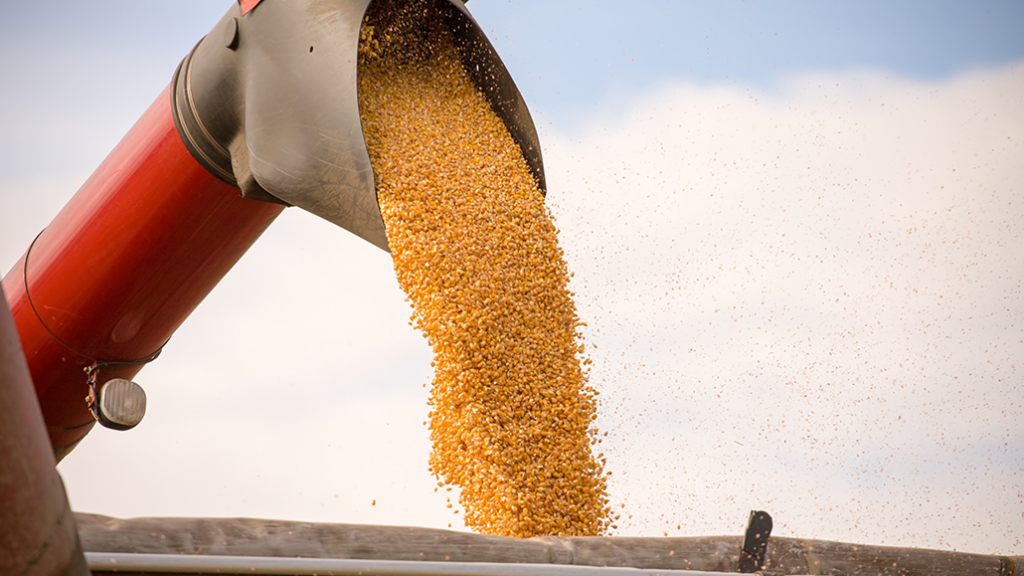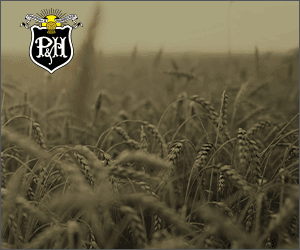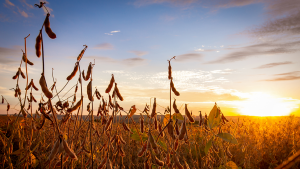The 2021 corn markets
VOLATILE PRICES

2021 was a good year for corn prices. It was also a tumultuous year. A year ago, we were heading into the second wave of the COVID-19 pandemic in a world where vaccines were only a theory. The pandemic certainly caused all kinds of upset in our agricultural markets. As we come to the end of the 2021 harvest and look toward planting another corn crop in 2022, there are a world of challenges beyond COVID-19. Where does the Ontario corn economy go from here?
In Ontario, corn farmers are price takers, based on a futures price from Chicago and a basis adjustment, which is different across the province. The length and breadth of Ontario not only make for interesting corn production challenges, but also at times reflect very diverse corn market opportunities and challenges. Corn is grown across Ontario, from Windsor in the southwest to the Quebec border and then into parts of northern Ontario, including the far northwest Rainy River district. At the same time, the corn price is buffeted by factors taking place in production fields worldwide, in the United States, Brazil, Ukraine, and many other places. Add in the ever-changing demand picture and Ontario corn farmers are continually challenged to sell their corn for the highest possible price.
At the time of this writing, the December corn price is $5.29, a healthy price going into harvest, but a far cry from its earlier June 2021 high of $6.16 per bushel. A year ago in 2020, the December 2020 prices was approximately $4 a bushel. Clearly, corn futures prices have been volatile over the last year and will likely remain so into 2022. We got here with slightly lower than expected U.S. production in 2020, lower Brazil production in 2021, and much bigger robust demand for U.S. corn from China in 2020 and 2021. The cash corn price as of October 12 in Ontario ranges from $6.40 to $6.81 a bushel.
LOOK AHEAD
What will the price of corn do going forward? What factors do Ontario corn farmers need to consider both in the futures market and the Ontario cash market? How will production shifts in 2022 in the United States, Brazil, and the Ukraine affect these prices? How will demand for corn behave going forward as COVID-19 grows older as we head into 2022? How do we as farmers mitigate our risk for the old crop corn that might be left unpriced from 2021 and how do we hone that risk management in the months ahead?
As of October 12, the United States Department of Agriculture (USDA) has put a slightly bearish tone on U.S. corn supply. On September 30, the USDA released their September 1 grain stocks report, raising U.S. corn stocks to 1.24 billion bushels. Later, on October 12, USDA had pegged domestic corn yield to come in at 176.5 bushels per acre with total production of 15.019 billion. It is a huge crop, the second largest ever with yield being the second largest (a hair below 2016 levels). The USDA on October 12 pegged Chinese corn imports at 28 MMT, but at the same time maintained Chinese corn production at 260.67 MMT and Chinese feed use at 203 MMT. The bottom line is the U.S. is producing a whopper of a corn crop in 2021 and it is one reason that futures prices have retreated since June 2021. How corn demand handles this huge crop will help determine the rest of the price story.
Demand over the first three quarters of 2021 was robust for corn, with the level of Chinese buying being a pleasant surprise. This was aided by Brazilian Safrinha crop in 2020 being much below average. Everybody who grows corn would love to see the Chinese to continue to increase their corn buying. However, they heavily substituted wheat and rice into feed rations over the last few months, and at this writing, with their hog prices low, future Chinese corn demand is uncertain compared to what it was in 2020 and 2021. A reminder might be the Chinese January corn contract on the Dalian exchange which closed at $9.94 U.S. on October 11, slightly off their harvest lows. This is down from $10.30 last July 1.
In Ontario, there is a big crop coming off the fields in 2021. Statistics Canada estimated 2.1 million acres of corn at an estimated yield of 169.4 bushels per acre. Private Ontario crop tours have projected even higher record yields. Quick math tells us (2.1 million acres x 175 bu/acre = 367.5 million bushels) 367 million plus corn bushels will be harvested in Ontario in 2021. About a third of this will go to ethanol, a larger portion goes to feed, food, and residual use, and the rest will be exported. This large supply will surely impact local basis especially at the time of harvest. U.S. replacement price will always loom and serve as a cap on Ontario prices if they go high enough to warrant U.S. corn imports.
Much Ontario corn may have been priced in June 2021 when futures reached their high. However, that was then, and this is now. Key is risk management, knowing your way ahead. Standard pricing orders set to hit at specific cash levels can be helpful, especially with volatile futures and cash markets. This helps especially considering the unpredictable path of the value of the Canadian dollar. Daily market intelligence will remain key. The challenge for Ontario corn farmers is to balance these many concerns.
Philip Shaw is a farmer near Dresden and the author of Grain Farmers of Ontario’s Market Trends Report published 14 times per year (available at www.gfo.ca/graintalk). The opinions expressed in this commentary are his own. •











